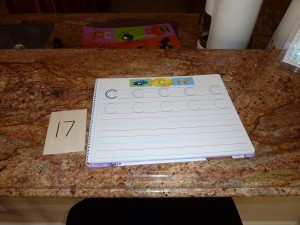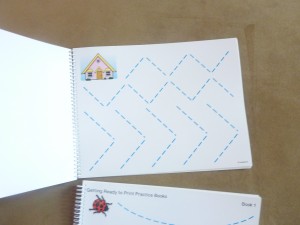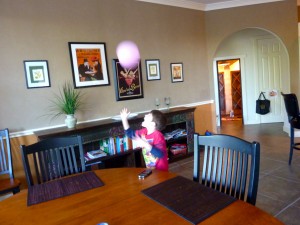I was looking for ways to build Andrew’s hand strength, particularly the muscles that allow the hand to squeeze and squash things. I have shown how I’ve used frosting in a cake decorator (Cookie Cutter Decorating) to work on this and was particularly excited about his interest in making colors with food coloring and thought about combining the two. Knowing that he doesn’t really like to get his hands sticky (neither do I!) I turned to one of my favorite items for containing messy things – the Ziploc bag.
My Obstacle Course Station Activity: Squeeze the frosting to make new colors.
Station Activity Set Up:
I scooped some whipped frosting into the bag and placed some drops of food coloring, strategically scattering them around so they wouldn’t all be clumped in the same spot. For this particular station activity I choose yellow and blue food coloring because it was March and I wanted him to see how those two colors make green. With the prep work done for this (another easy station to set up – time spent, probably less than a minute!) it was ready and waiting for My Obstacle Course to begin.

At The Station:
When he got to the station, he read the directions that he was to squeeze and squish the frosting so the colors would mix or combine. I demonstrated how to do this and showed how he could lift the bag and squeeze the frosting to move it around. He pushed and pressed, made a fist and pounded the frosting. It was hard work for him but he was also so excited to see the colors changing as the mixed in, first turning the frosting yellow and blue in sections and then mixing to make green. I loved it because it was really working his little hand muscles without him getting upset or bothered by sticky frosting on his hands. (Working on sensory tolerance for the stickiness is a station on its own, one done right at the sink 🙂 . But my goal for this activity was to build fine motor, hand strength.)
When you are done, the bag of colored frosting does not have to be disposed of just yet. It can also be used to build beginning handwriting skills…

the same way I showed with No “Ick” Finger Painting! Your child can practice making shapes, letters and numbers in the colored frosting while also building finger and hand strength.
Engage, Encourage and Empower!















